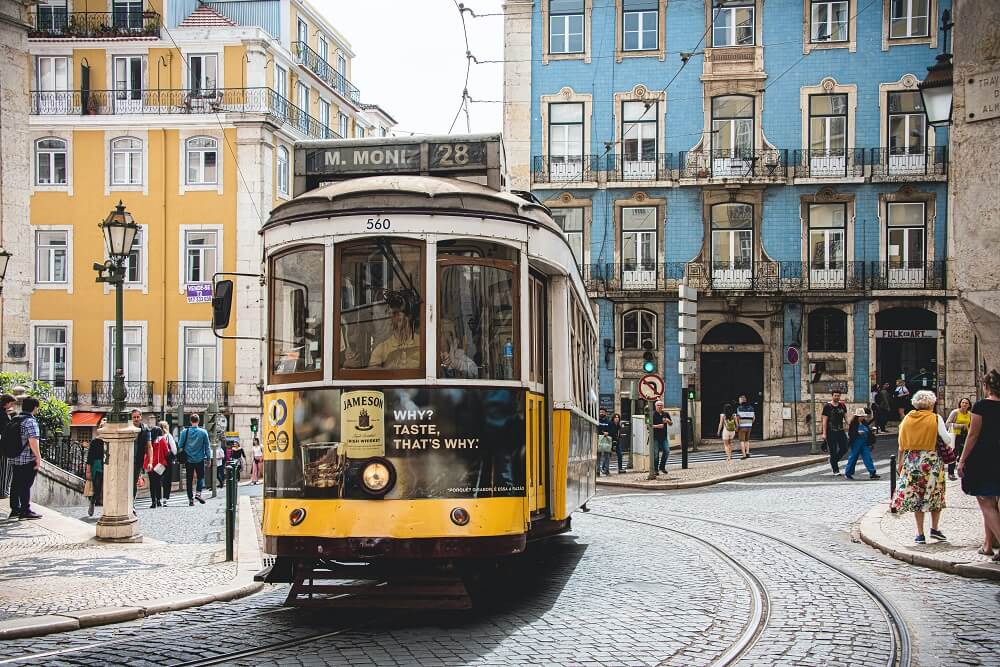Do you need to rent a car in Portugal, or can you make it relying on public transport? If you’re planning a trip, you’ll need to be able to get around!
Many of Portugal’s major attractions and popular destinations are accessible by public transport, organised tours or a combination of both. But some of the more off the beaten path destinations will require a lot more organisation and dedication to reach without the convenience of your own transport. Like most things in life, whether you rent a car or rely on other methods will be a trade-off between money and time.
There are several things to consider when deciding how to get around Portugal including the length of your stay, how many people you travel with, what you want to see and do and of course, your budget. To help you decide whether it’s worth forking out for car hire on your trip, here are somethings to consider for each transport option.

1. Hiring a car
There is no denying that getting around with your own car is the easiest and most convenient way to see the most in the shortest possible time. And if you are travelling in a larger group, it may not even be the most expensive. Travelling with at least more than one person will bring down your per person cost of hiring a car, while for all other methods the cost per person remains the same.
Pros: You can’t go past hiring a car for convenience and freedom in choosing your own itinerary. You’ll be able to go where you want, when you want, carrying all your luggage and be free to stop for a pee whenever you need to.
Cons: Obviously, the cost of hiring a car is the main drawback. Besides the initial outlay of car rental, there are other also costs to factor in including insurance, petrol, tolls and parking. All this can add up and if divided by only one or two people, making hiring a car by far the most expensive way to get around. It also won’t be as convenient if you just plan on staying in cities as you will have to find somewhere to park (and pay for it) and historical centres are often closed to cars without resident permits. Plus, don’t forget that someone has to actually drive the car, which can be a nerve-wracking experience if you are not a confident driver.
2. Organised tours
3. Public transport
Portugal has an extensive public transport system made up of trains, buses, coaches, ferries, funiculars and trams. For visiting the most popular destinations and getting around the larger cities, public transport is reasonably cheap and convenient. But for travel over longer distances and to places outside the major tourist hotspots, public transport becomes a challenge.
Pros: If you are travelling alone, public transport will be by far the cheapest way to get around. You also don’t have to worry about parking, the stress of driving and you can have a couple of drinks without risking a DUI (or worse!). Just sit back and enjoy the scenery!
Cons: Taking public transport you are restricted by the set timetable and route. It’s usually the slowest way to get around and for more than one person, it might not even be the cheapest. You also have to carry your own luggage around and more remote places just won’t be accessible.

4. Flying
Yes, you can fly between cities and major travel destinations in Portugal. But honestly, is it worth it? The carbon emissions alone put me off, but even if you aren’t worried about contributing to impending global doom, you probably aren’t even going to save that much time. Once you factor in the time it takes getting to the airport, waiting at the airport, then getting from the airport to your destination, you probably could have driven, taken the train or a bus.
Pros: I don’t know…maybe you will get a window seat and can enjoy the view.
Cons: Excessive carbon emissions to travel short distances, getting to and from the airport, cost, dry skin.
5. Taxis and rideshare apps
For travelling within the major cities, taxis and rideshare options such as Uber are convenient and surprisingly cheap. For more than one person, it is often cheaper when travelling short distances to take an Uber than to catch public transport.
Pros: Convenient and reasonably cheap in cities.
Cons: Rideshare apps are not available outside of the bigger cities, and probably won’t be worth your while for longer trips.
So should I rent a car or what?
If you just plan on visiting Lisbon or Porto, I’d say no. If you are visiting areas outside these two main cities, I’d say get one if your budget allows, but don’t forget to factor in all the expenses. What’s your experience getting around Portugal? Let me know in the comments below!

